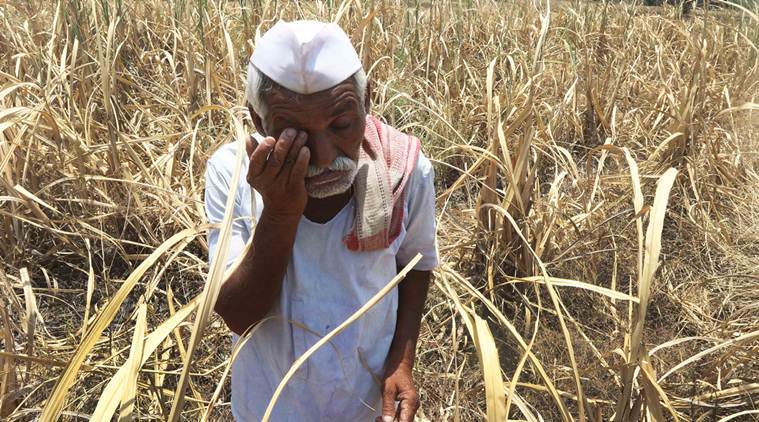
Rural demography and its realities have been studied in India, from two broad lenses – the first one, which evaluates the economic parameters of the agrarian society and the others, being sociologists, who were keen to study inter-caste dynamics and family relations. More recently, the prominence of environment and ecology has also gained significance. This is a welcoming step, for understanding the underlying reasons affecting agriculture, as a sector and to acknowledge the reality that unlike the service and manufacturing sector, agriculture still is a nature dependent activity. Over the years, the crisis in the agricultural sector has intensified. The contribution of agriculture to the GDP has dipped, while that of the above mentioned sectors has increased. One of the fundamental reasons for this scenario is ‘disguised employment’, where people seem to be employed but in reality there are not. The economists, often, suggest that shifting these surplus people into the other two sectors is the key. This shifting or ‘migration’ as a potential solution, is contentious and not necessarily the one that solves the root problem.
The Agriculture sector, since Independence has seen three major reforms – the land reforms that were carried out in the late sixties and early seventies, green revolution and finally liberalization in the nineties. Land consolidation and reforms had a tremendous cost – social, political and ecological; whereas the commercialization and intensification of crops under green revolution resulted in creating a dependence on the market both for inputs and sale. The fluctuations in the market, which later resulted in the introduction of liberalization, affected the agriculture sector as well, given its intersection post green revolution. The green revolution also put an ecological cost, as the chemical – pesticide led agriculture resulted in depletion of ground water, pollution of the environment and soil erosion. Therefore, it comes as no surprise that along side these projected reforms, India witnessed various farmer’s movements in the eighties, demanding impartial prices for their produce and fair trade terms. These factors combined, gave rise to the crisis we see in the agricultural sector today.
Apart from the financial implications, the same period witnessed fast changing transformation in the existing caste relations. The green revolution led to the strengthening of some castes, which led to subsequent clashes with other castes who felt their hegemony was under threat now. The middle-ranked backward caste farmer, and farmers with small land holdings rose to power, which resulted in a clash between the upper castes and Dalits. But in areas which were not touched by the green revolution, the incentive to remain in the agricultural sector declined. Increasing migration, urban aspirations, better employment opportunities in the cities acted as catalyst for the youth in the villages to find avenues beyond agricultural sector. Intersecting with the dynamics of changing class relations is the ‘peasant – class’ distinction model. The model elaborates the two classes that exist in the agricultural sector of the landlords at the top and agricultural laborers at the bottom. This thesis has relied on the fact that the ones at the top, act like the exploitative capitalist class and have revolted whenever the lower class fought for power and representation. The second assumption is that the market, post liberalization has only benefitted the landlords and rich peasants. Even if these two assumptions are true, it cannot be denied that this class distinction, has widened after liberalization, making all the farmers susceptible to market fluctuations. This vulnerability leads to small peasants taking up loans from middle men, rich peasants and money lenders, which are believed to be the ones who were benefited by the markets, post liberalization.
Today, therefore, quick fixes like loan waivers, crop insurance and intermittently providing high market prices for crops is not a solution, definitely one for the long term. The issue is larger, entangled with above discussed phenomena’s. The three potential solutions for the rural distress India has been witnessing over the years can be:
1) Investing and promoting agriculture based allied sectors, which tackles the problem of disguised employment.
2) Institutionalizing robust regulatory measures for marketing and selling agricultural output. This involves drafting a uniform national agricultural policy and eliminating the middle men.
3) Linking the producers (farmers) with the market, domestic and international both. More than having the authority to charge a price for one’s produce, it is more important to also be part of the process, once the farmer sells his produce in the mandi’s.
These solutions definitely don’t address the entire problem or even claim to do so, but in all likelihood it is a more effective way than distributing monetary doles and freebies to farmers, which do not address the root cause of the problem but only act as a temporary relief measure.
Sanyukta works on Public Policy & Communication Strategy with Chief Minister's Office, Government of Haryana. Earlier she was a research associate with IIM Ahmedabad, Chief Minister's Good Governance Associate and Project Associate - Health and Social Policy, Harvard Project for Asian & International Relations.